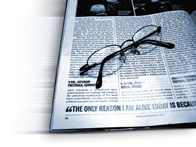| |
10GBase-CX4 lowers 10G Ethernet cost.
10GBase-CX4 lowers 10G Ethernet cost
By Dan Dove
Network World, 05/24/04
Despite the myriad of media types available for 10G Ethernet networking, the technology is too expensive for many corporations to realize its performance benefits. That's why the IEEE developed 10GBase-CX4, a lower-cost switch interface.
The 802.3ak task force formed in 2002 to quickly create a standard for 10G Ethernet that operates on twin-axial cable assemblies of up to 50 feet. With Gigabit Ethernet rapidly moving to the desktop, a higher-speed fat pipe would be needed between desktop switches and distribution switches to combine traffic in much the way that Gigabit Ethernet had done for 10/100M bit/sec networks.
When using Gigabit links for stacking Gigabit switches, the typical throughput is well below the aggregate bandwidth of the switches and therefore performance is limited. With 10GBase-CX4, performance can be scaled to take advantage of this faster pipe. In addition to responding to the broad demand for high-speed interconnects within wiring closets, 10GBase-CX4 also can be used in data centers to aggregate servers.
Range is not critical for this application because most switches reside in a wiring closet. But cost is paramount, as the uplinks are often integrated directly into desktop switches and the cost of the uplinks is amortized into the per-port cost of the switch.
Approved in February, 802.3ak is economical because it reuses portions of 802.3 and other standards to simplify and lower the cost of implementation. For example, 802.3ak specifies the same type of connectors and cables now used with 4X InfiniBand, letting vendors incorporate 10GBase-CX4 capability directly within highly integrated chips. It also minimizes design, installation and maintenance costs by preserving 802.3 network architecture, management and software features. As a result, the IEEE expects installation costs for copper 10GBase-CX4 interconnections to be one-tenth that of comparable 10GBase-optical solutions.
Ethernet engineering
10GBase-CX4 uses the XAUI (10 Gigabit Attachment Unit Interface) specified in 802.3ae, and the 4X connector that's used for InfiniBand.
Rather than attempt to transmit 10 gigabits over a single copper link, the 802.3ak specification uses four transmitters and four receivers operating differentially over a bundle of very thin twin-axial cables to transmit 2.5G bit/sec each at a baud rate of 3.125 GHz per channel with 8B10B coding. This requires four differential pairs in each direction for a total of eight twin-axial channels per assembly.
Pre-emphasis and receiver equalization are used to boost the signal energy to compensate for loss at high frequencies. Pre-emphasis is a technique whereby the high-frequency content of a transmitted signal is boosted or low-frequency content is attenuated to compensate for high-frequency loss in cable assembly. Receiver equalization is a similar process applied at the receiver. Using pre-emphasis reduces the dynamic-range requirements on the receiver equalizer and makes it easier to implement in standard silicon.
Cable assemblies for CX4 are slightly different from the InfiniBand cable assemblies from which they were derived. The 802.3ak committee chose to specify them using a more precise method, and therefore some InfiniBand cables might not meet CX4 specifications.
While CX4 cables are not as readily available as Category 5e patch cords, multiple suppliers offer them. Unlike Category 5e cables, which are field terminable, CX4 cables require factory termination, so customers must specify length. Longer cables tend to be larger in diameter, but for typical distances of less than 20 feet the diameter of a CX4 cable is close to that of Category 5e.
Dove is chair of the IEEE 802.3ak task force and principal engineer for HP ProCurve's networking business. He can be reached at dan.dove@hp.com.
|
|


